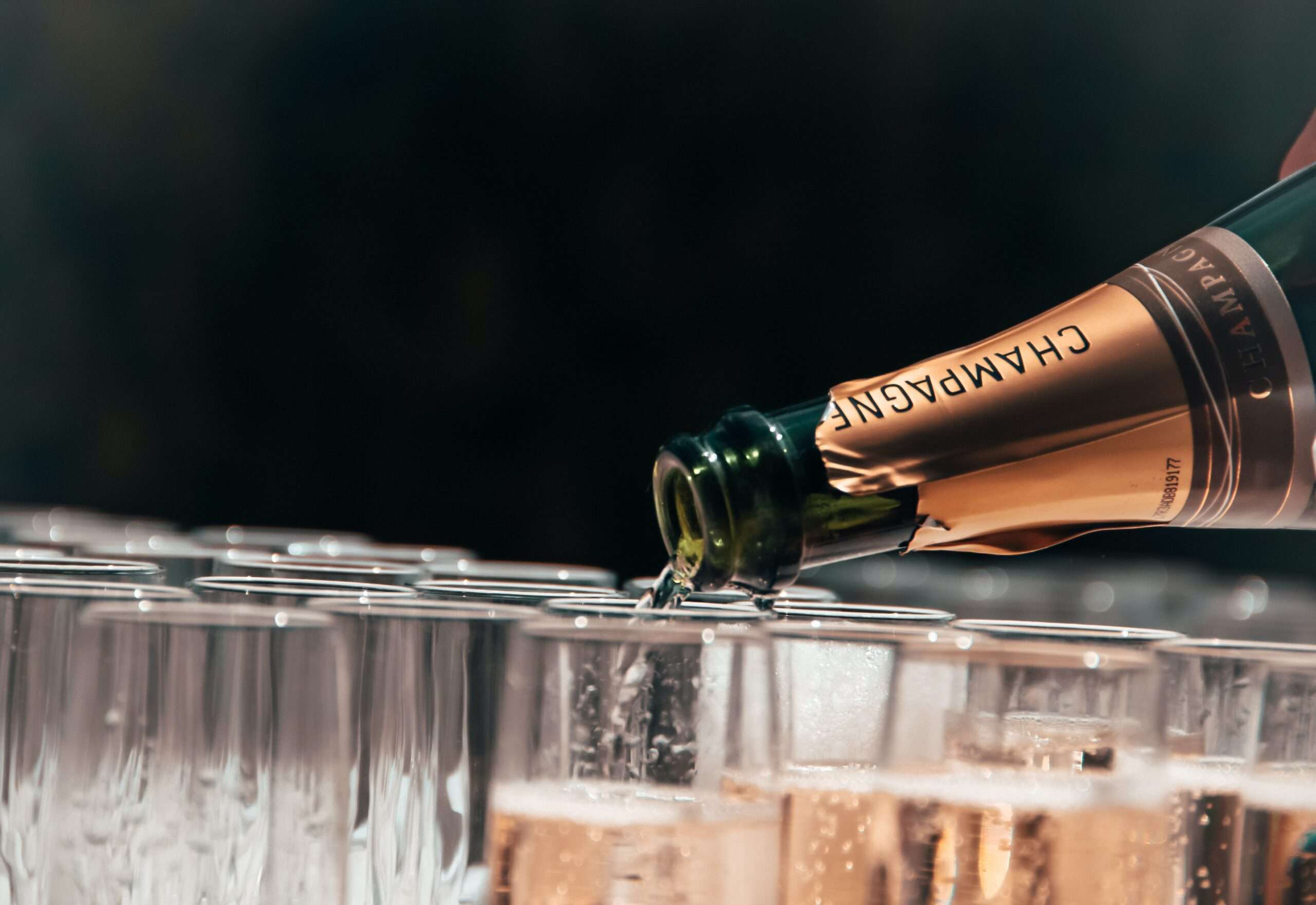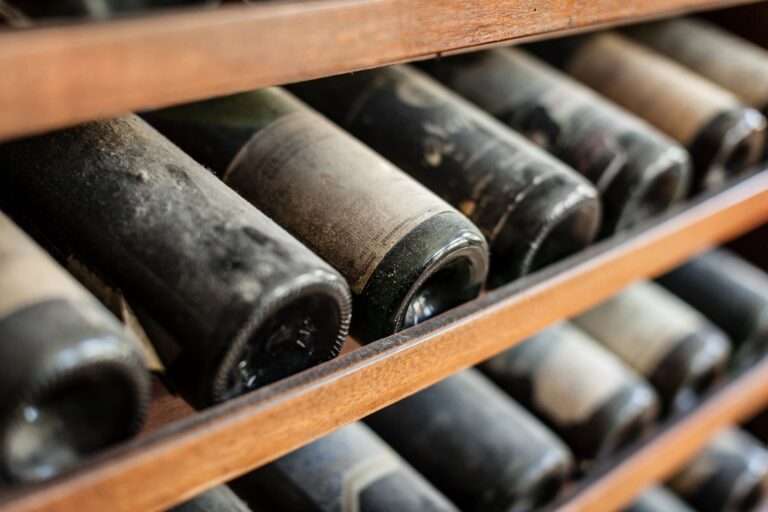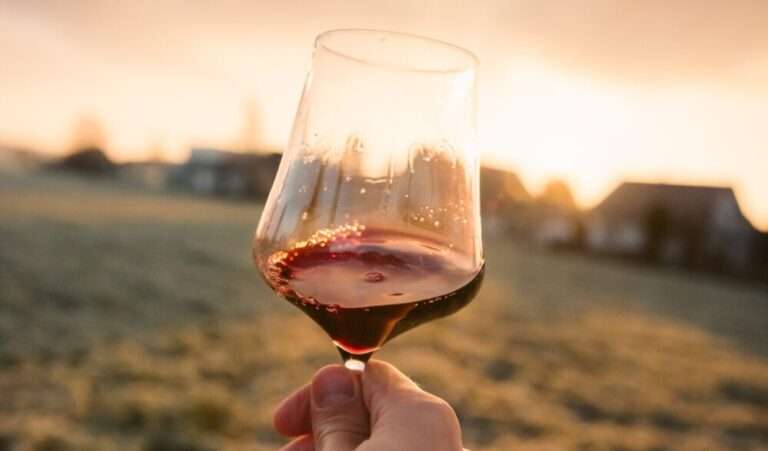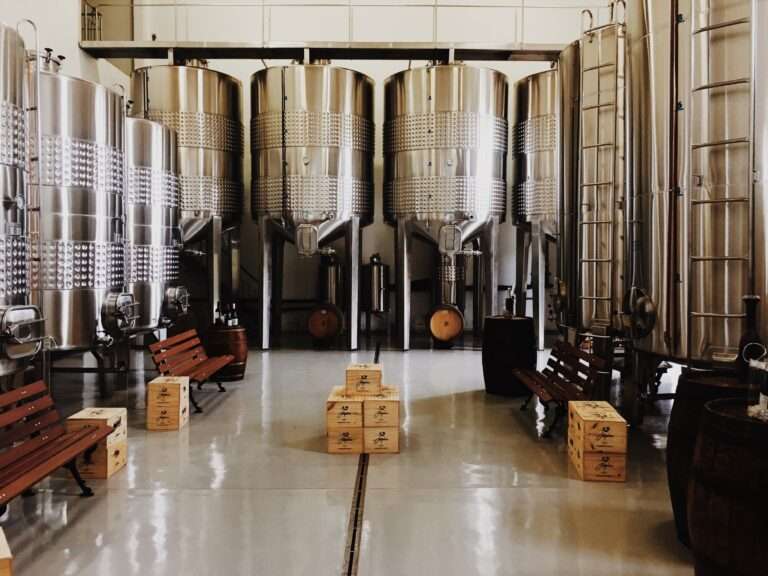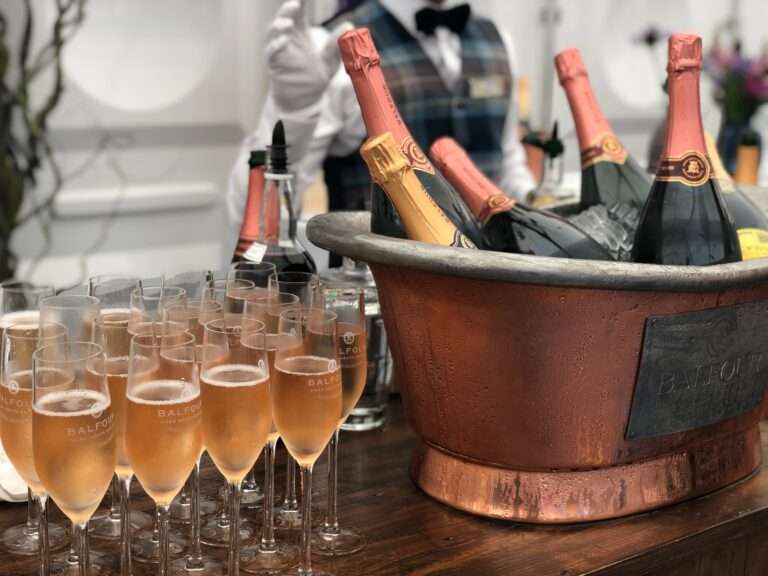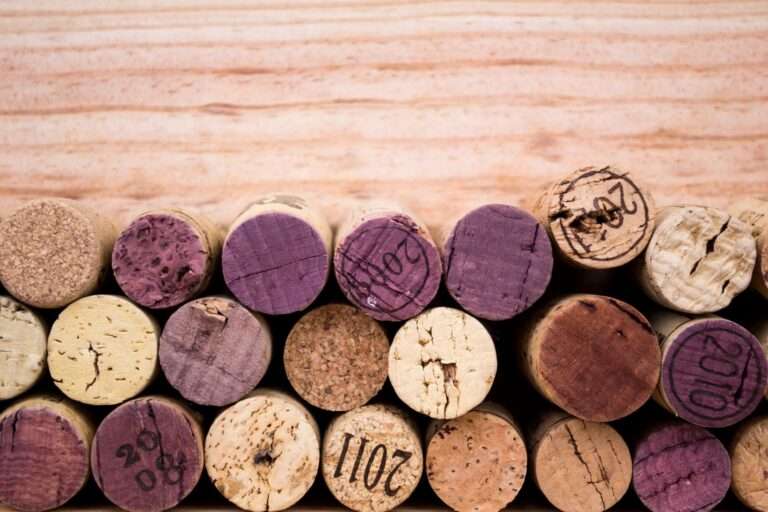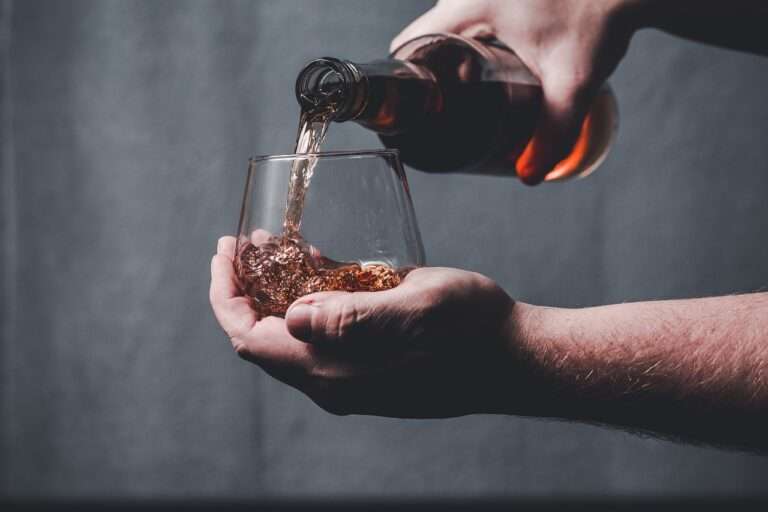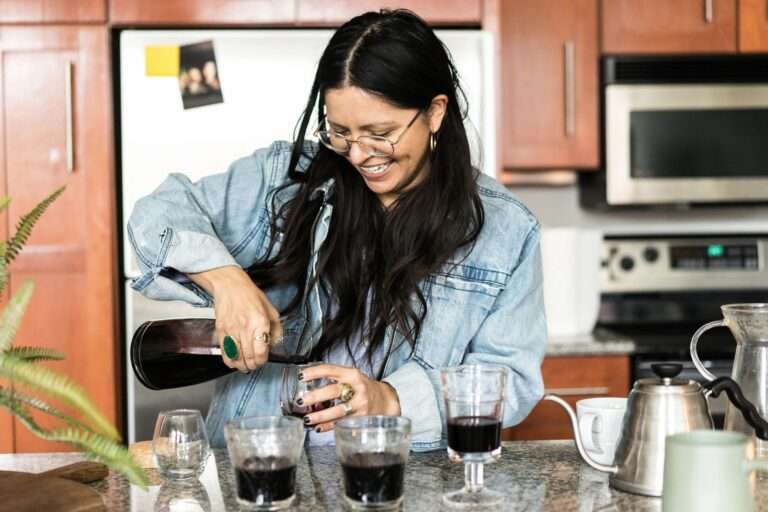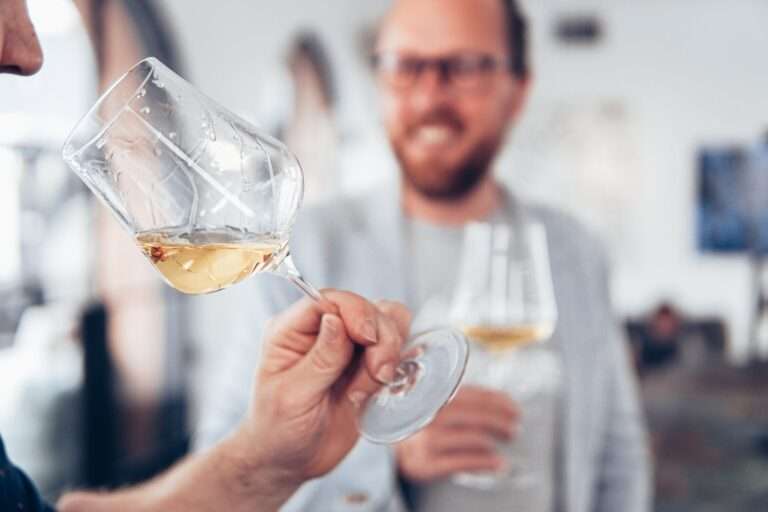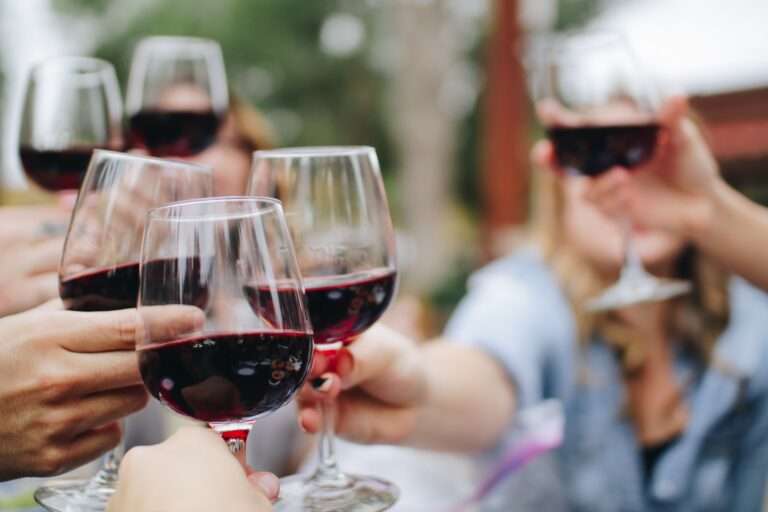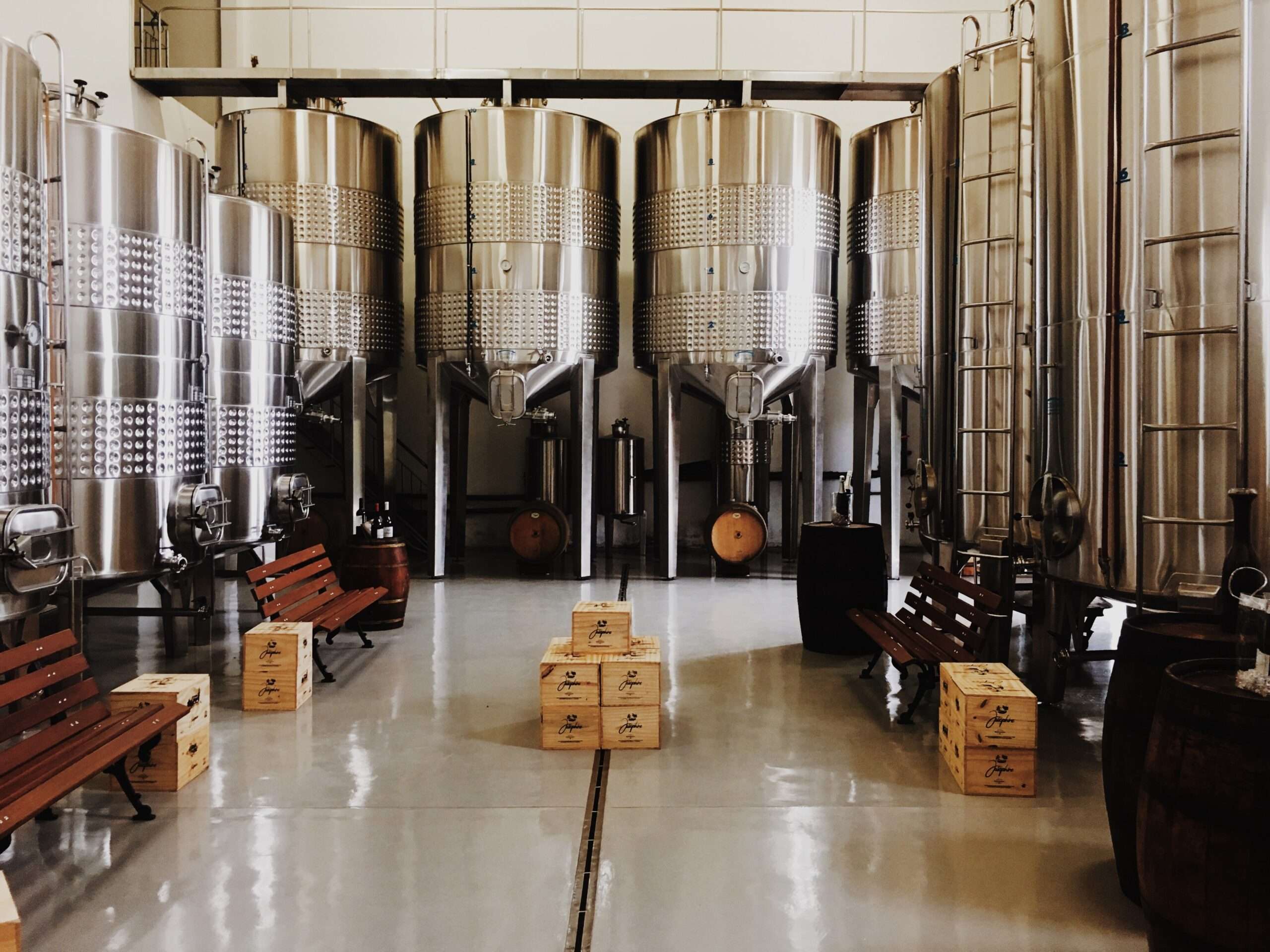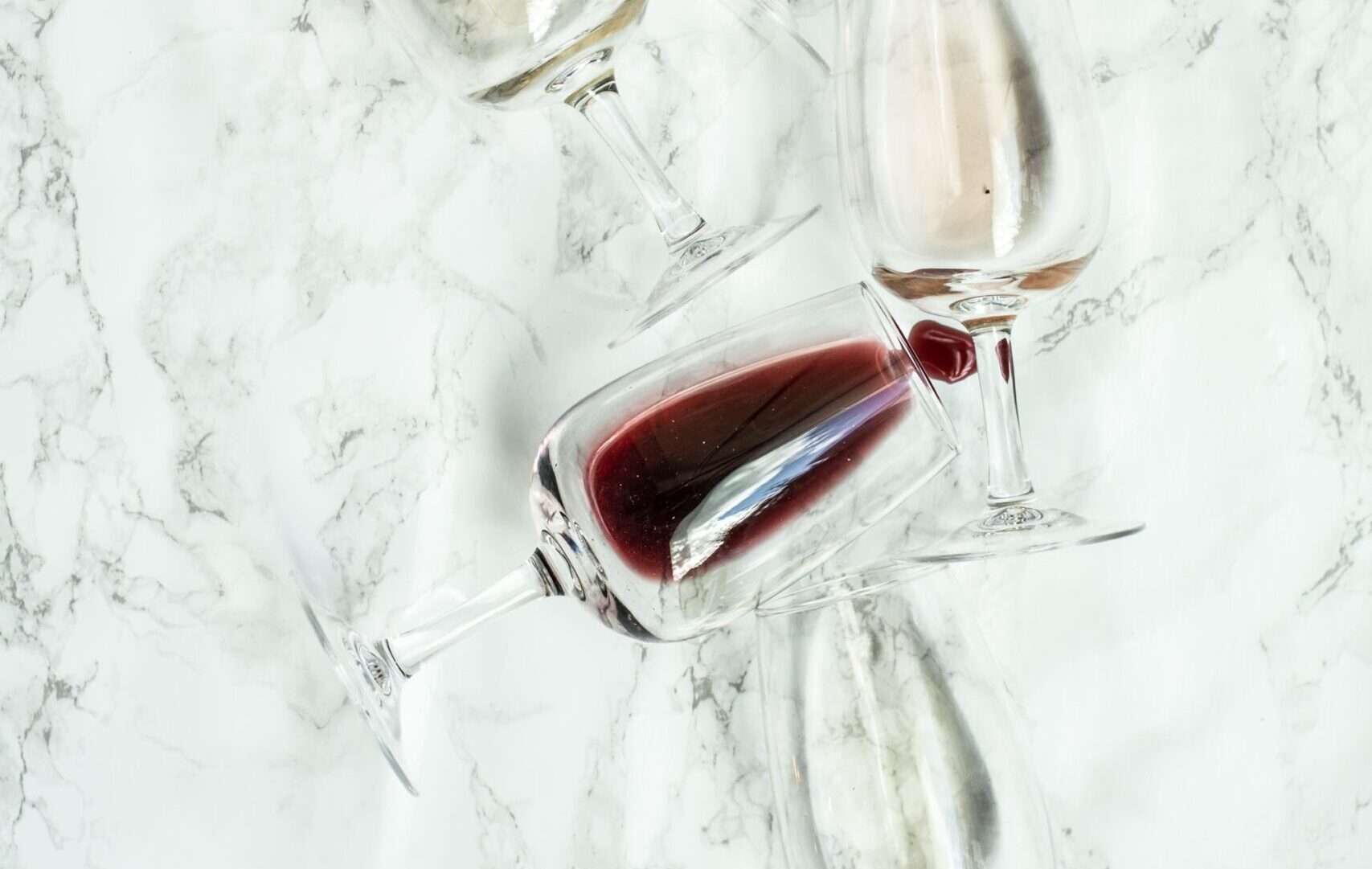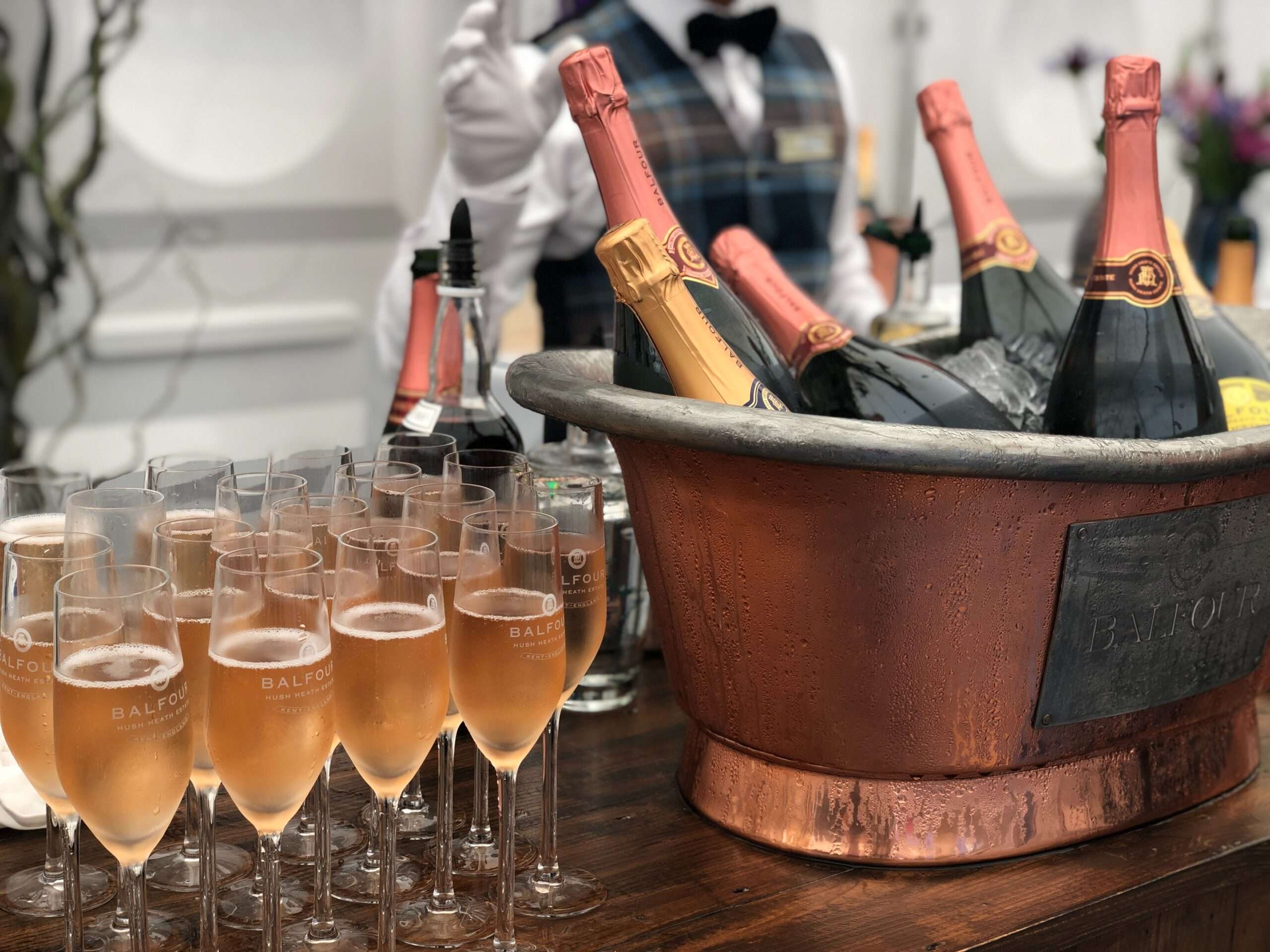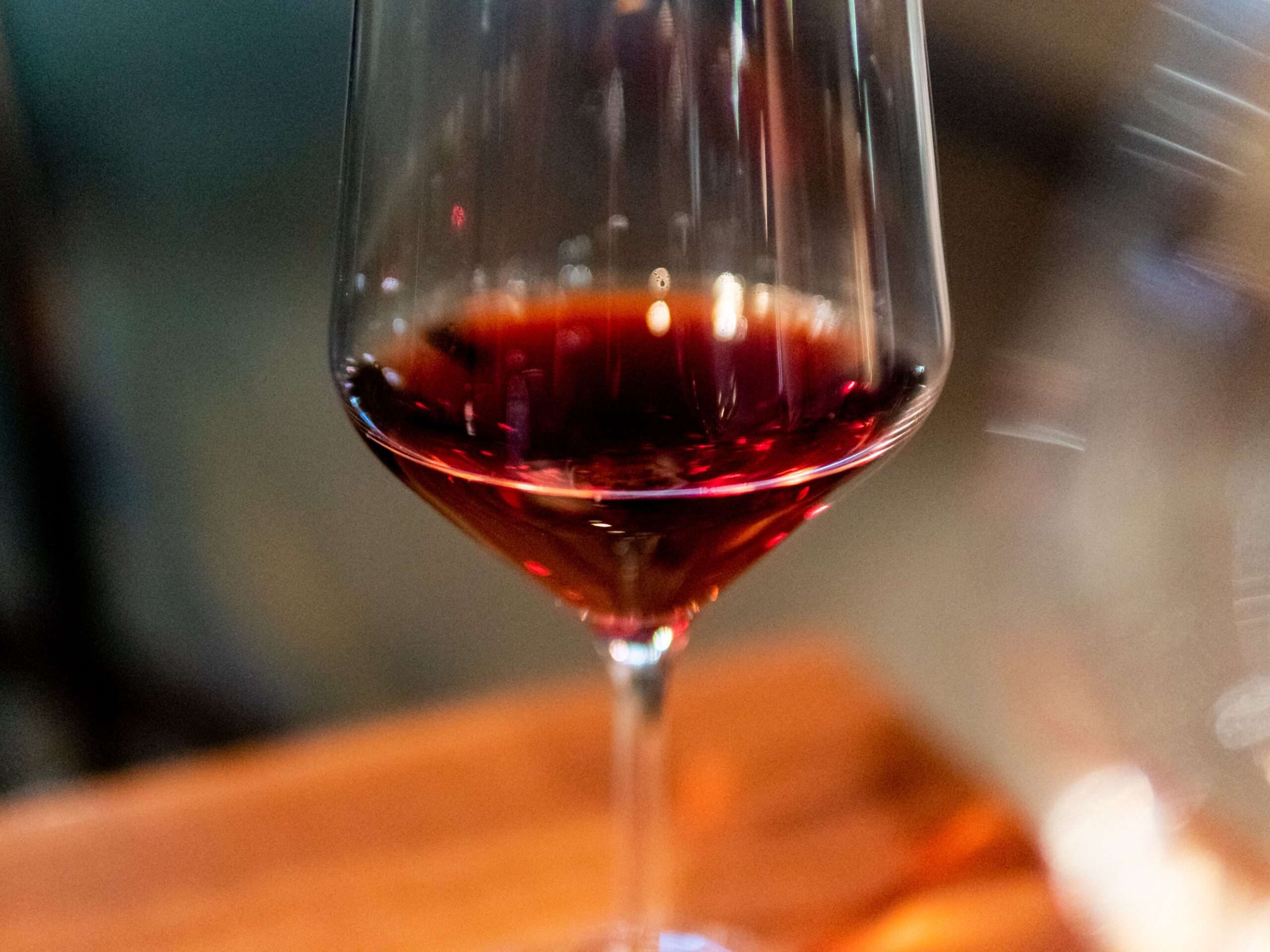Wine and champagne are two alcoholic beverages that share many similarities, yet they are so different from each other. I know it can get confusing. That is why I specifically want to answer an age-old question typically asked with no context, wine versus champagne? What is the difference?
Both wine and champagne are made from grapes. However, while wine is smooth, champagne has bubbles. Those bubbles are formed naturally during the second fermentation phase that wine does not go through. While wine can cost more, champagne is more expensive for the average person.
There is so much more to this comparison than that. We need to look at the similarities in the varietals used in the production process for both champagne and wine. After that, I want to answer as many of your questions as possible. This article will be an in-depth one, so grab a glass of wine or champagne and let’s jump into it.
Do Wine And Champagne Use The Same Varietals?
Champagne uses the same type of grapes used to make normal wine, whether red or white. The most popular varietals used for champagne are:
- Chardonnay
- Pinot Noir
- Pinot Meunier
These three grapes are the predominant grapes you will find in the specific region of France that champagne is made in. Some champagnes will use all three of the grapes together, while others might only opt for one or two.
You may be asking yourself if champagne is clear, why do they use red grapes such as pinot noir and pinot Meunier? Well, the only reason red wine is red is that the skins are left on during the production of red wine.
There is an abundance of varietals that can be used to make wine, and I am sure you have heard of the most popular ones.
- Merlot (red)
- Malbec (red)
- Cabernet Sauvignon (red)
- Cabernet Franc (red)
- Shiraz, also known as Syrah (red)
- Petit Verdot (red)
- Pinot Noir (red)
- Sauvignon Blanc (white)
- Chenin Blanc (white)
- Chardonnay (white)
Many more grapes are used to make wine; too many to list in this article.
Champagne Versus Wine: How They Are Made
Champagne and wine go through the same process, which we will briefly discuss in this article. However, for an in-depth look at how wine is produced, I recommend checking out this article about wine production where I discuss everything you need to know. That’s said, let’s go over a brief summary:
- Grapes are harvested and sent to the winery.
- The grapes ferment until they have a pulp consistency.
- A press removes the liquid.
- The liquid is then aged.
- Once aged, the wine is bottled.
It is important to remember that red wine gets color from the grape’s skin. For champagne and even some white wines, the skin is removed. That is the first major difference.
Once bottled, champagne goes through the second stage of fermentation. A little bit of yeast is added as well as some sugar. The most traditional method is to seal those bottles with wax and store them slightly tilted.
During the second stage of fermentation, champagne forms bubbles. Once the aging process is finished, the seal is popped off. Just before the seal is broken, the champagne is tilted upside down. Doing this allows the yeast to collect at the neck of the bottle. The bottle is cooled so that the yeast solidifies.
The leftover yeast shoots out of the bottle when the seal is broken. Now, the champagne is ready to be sold.
Side Note: Champagne is not carbonated. The bubbles form naturally, while some sparkling wines opt for the artificial route. The natural bubbles in champagne are soft and small, while carbonated sparkling wine has thicker bubbles. Not all sparkling wines do this, but no champagne does.
Is Champagne Stronger Than Wine? Alcohol Values
Different wines have different alcohol values. There is no set standard. That said, champagne will typically have a set alcohol value of approximately 12%. Remember, the production of champagne is very restrictive. You have to make it in a certain region of France, and it has to be made a certain way.
When it comes to wine or even sparkling wine, the alcohol value depends on the winery making it. Because these three products differ so much in this category, let’s look at them individually.
| Wine Versus Champagne And Sparkling Wine Alcohol Values | |
| Product | Alcohol % |
| Wine | 7% to 25 % (mostly around 14.5%) |
| White Wine | 7% to 14 % (Mostly around 12%) |
| Champagne | 12 % |
| Sparkling Wine | 7% to 25 % (Mostly around 12% |
As you can see, the wines have a lot more leniency in what the alcohol value can be. As a side note, this does not consider the state or country’s laws, which could affect whether a certain alcohol level is allowed to be sold.
Because the production of sparkling wine is a lot less regulated than the production of champagne, wineries can go as low or as high as they want; however, there is an important thing to note.
Some wineries try to make their sparkling wine as if they were making champagne; thus, they will stick to the 12% alcohol value. At the same time, they also double ferment their wine instead of artificially carbonating it.
Why Does Champagne Taste Different From Wine?
If wine and champagne are both made from similar grapes, how do they taste so different? Well, luckily, we have just discussed how they are made differently. With that knowledge, let’s take a look at a few reasons why wine tastes significantly different from champagne:
- Both wine and champagne contain small amounts of yeast. It helps the fermentation process. However, the yeast adds more flavor during the 2nd fermentation phase that champagne goes through.
- Champagne has slightly more sugar than wine, bringing out more flavors while hiding the acidity.
- The bubbles react with your taste buds which can alter certain flavors. Think about how Coca-Cola tastes when it is flat vs. when it is still fizzy.
- The grape Pinot Meunier tastes different from the most common varietals used in red or white wine.
Champagne Versus Wine: Which Is Healthier?
If you are concerned about the health effects of wine or champagne, you should speak to a doctor. It is also important to remember that when people say wine or champagne is “good for you,” they typically mean if you drink it in moderation.
With that said, champagne has a higher sugar count than white and red wine. The acidity levels are also slightly higher. So, wine seems to be the healthier choice in that regard.
However, things start to swing in champagne’s favor for weight loss. While the USDA lists both wine and champagne as having 140 calories, champagne does seem to be on the lower side, peaking at roughly 80 to 90 calories.
Also, champagne is consumed in smaller glasses, which could contribute to the lower calorie count.
Do Wine And Champagne Smell The Same?
Some white wines share a similar nose to champagne. Now, your smell is where you pick up many undertones of alcoholic beverages. If you are new to wine, you might not be able to distinguish the difference between a Chenin Blanc white wine or a glass of champagne.
However, as you become more experienced, you will notice that champagne has a distinct earthly characteristic even though they are similar. You will get intense aromas of nuts and oak with slight undertones of fruit.
On the other hand, a white wine like Chenin Blanc will give you a fruity smell with slight citrus undertones.
When it comes to red wine, it smells significantly different from champagne. Red wine can also smell different depending on what grape the wine is made from. However, the general characteristic is that you will pick up on darker fruits such as berries and plums.
Does Wine Cost More Than Champagne?
Before reading this section, it is essential to note that for the average person having a celebration, ordering a bottle of champagne will cost more than ordering a bottle of wine. You won’t find a $30 or $40 bottle of champagne at a restaurant. Instead, prices start at roughly $70 for the most budget-friendly options.
Wine has a lot of options. You can either go for something budget-friendly like a $30 bottle or spend over $1000 on a bottle of wine at your favorite restaurant. I don’t want to discuss the differences between a $4 bottle of wine from Walmart and a $150,000 Chateau Lafite in this article.
Instead, we need to look at how expensive wine can be compared to the most expensive champagnes. At the same time, we need to look at the most budget-friendly champagne knowing full well that you can get a $4 bottle of wine.
- Wines can cost upward of $500,000. An example of this is the 1945 Romanée-Conti Grand Cru.
- Champagne does not typically go higher than $50,000.
- “Cheap” Champagne starts at around $50.
- Cheap wine starts at less than $10.
So while the most expensive champagnes don’t come close to the most expensive wines, champagne is a lot more expensive for the average person.
Food And Wine Pairing
Food and wine pairing is a lot more tricky than champagne and food pairing. There are so many different varietals, and each of them is better suited to some meals than others. Perhaps in another article, I will go more in-depth into what pairs best with your wine.
One thing to remember is white wine typically pairs best with seafood and poultry, while red wine pairs best with red meat. With that said, here is a small example of what varietals go best with what food:
- Cabernet Sauvignon: This full-bodied wine pairs best with richer red meats like lamb or rump steaks.
- Merlot: This medium-bodied wine pairs well with rump and sirloin. Most merlot wines are creamy, so don’t be afraid to add a creamy sauce to your dish as often it can be well complemented by the merlot.
- Pinot Noir: Pinot Noir is a soft red wine that pairs best with fillet, but it goes well with most dishes because it is soft.
- Sauvignon Blanc: This salty white wine is great for when you are having seafood such as oysters or even fish without any creamy sauces.
- Chenin Blanc: This wine is the people-pleaser of white wines because it is easy to drink. Because of its creamy nature, it goes well with sushi and most other seafood recipes that contain some type of sauce like lemon butter.
With all of that said, if you enjoy having a Chenin Blanc with lamb, you should go ahead and do it. These pairings are just recommendations.
Food And Champagne Pairing
Again, champagne is tricky. It may be clear but remember the grapes used are primarily red. However, that doesn’t mean the champagne goes best with red meat or even seafood.
Instead, champagne goes well with light meals, typically starters. And no, it doesn’t matter if you have a seafood starter, sushi, or even carpaccio. Champagne will go great with any of those.
Personally, I find that champagne goes well with oysters and sushi. The acidity complements the salt very well while not being overbearing.
How Would You Describe Wine?
There are various ways in which you could describe wine. For example, after a long day of work, I like to describe a glass of wine as necessary. It all depends on which wine you are talking about, as each varietal has a different smell, taste, and Palate.
In the most general sense, wine has a fruity Nose and Palate. A full-bodied red wine will have sharp tannins that can overwhelm the back of your tongue. At the same time, pinot noir has soft to medium tannins with undertones of cherries and vanilla.
On the other hand, white wine has a certain level of acidity with salty undertones. You will almost always have slight citrus undertones, and depending on which varietal you are drinking, you could pick up on apples, pears, papaya, and many other tropical fruits.
How Would You Describe Champagne?
Champagne can be soft to medium-bodied. It has silky tannins, which makes it perfect for anyone who finds red wine too harsh.
The undertones you get from champagne can depend on the winery and you. While you might smell or taste nuts, someone else might not pick up on that; they could smell and taste oak.
The best way to describe champagne would be to say it is soft, smooth, sweet with fruity flavors complemented by earthy undertones.
Final Thoughts
when you think about all the different types of grapes that you can use for wine versus the limited amount of grapes used in Champaign, drawing a comparison can be tricky. How do you summarize the flavors of all the different grapes and generalize them into a paragraph?
Hopefully, you found all the answers you were looking for in this article.

